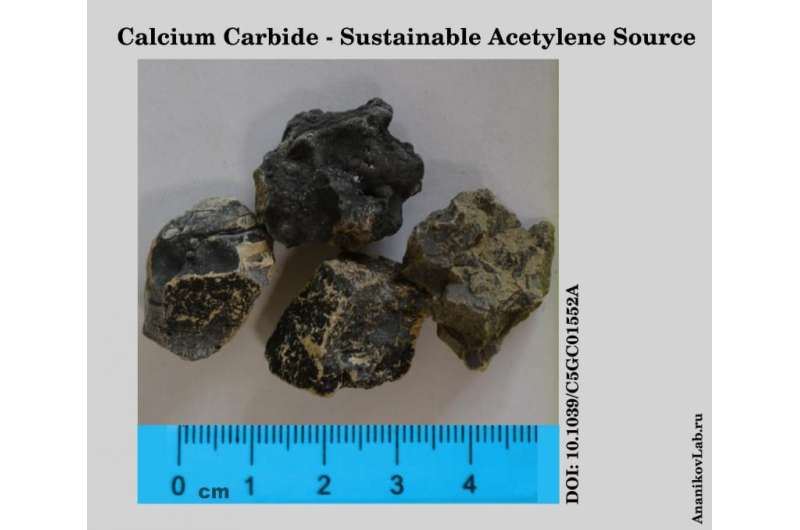New uses for abandoned molecule calcium carbide

A joint project of scientists from Russia has investigated chemical applications of calcium carbide. The project advances the idea of diverse acetylene chemistry on the basis of carbide technology. Using the proposed approach, cheap, available raw carbide material has been effectively transformed into valuable products that are in demand for material science and organic synthesis.
Over the last few decades, researchers have focused their attention on very large molecules and molecular systems. Scientists from all over the world study proteomics, genomics, construct complex proteins, nucleic acids, decode the genomes of entire organisms, and design new sub-cellular structures. Outstanding enthusiasm for these important and essential areas of science has become so widespread that the question arose: "Is there a place for small organic molecules in modern science?" It might seem that old, well-known small organic molecules, as well as some areas of classical organic chemistry, have been forgotten.
Remarkably, despite the above mentioned trend of mega-molecules, state-of-the-art research anticipates re-investigation of tiny molecules. Indeed, small molecules carry a huge and previously unrevealed potential for science and industry. A renaissance in this area of science initiated a new understanding of well-known small molecules. An example of a small molecule is a derivative of acetylene, CaC2, or calcium carbide.
Unremarkable gray "pebbles" of calcium carbide—valuable material for science and industry.
Friedrich Wohler first introduced calcium carbide in 1862. This breakthrough revolutionized lighting in 20th century Europe and the U.S. The manufacture of carbide reached thousands of tons by the middle of the last century. Such an increase was driven by the fact that carbide was mainly used for the production of acetylene. Nevertheless, the end of the carbide lamps era came with the advent of safer electric light sources. The development of catalysis and petrochemistry introduced cheaper acetylene sources, so calcium carbide was abandoned.
An innovative method proposed by a group of researchers led by Professor Ananikov investigated the synthesis of valuable organic molecules directly from calcium carbide without separation and storage of acetylene gas. As an example, thiovinylation reaction occurred directly in the reaction mixture. First, acetylene is allocated from calcium carbide and water, and second, thiol molecules become attached to the acetylene molecules. Both processes take place one-pot and do not require sophisticated equipment. The use of calcium carbide not only fundamentally simplifies and reduces the cost of synthesis, but also avoids the problems associated with transporting, storing, and handling of acetylene gas.
This process offers a vivid example of the successful replacement of dangerous and difficult-to-handle acetylene gas by using simple and inexpensive calcium carbide. If further research advances the chemistry of acetylene utilizing carbide-based technologies, the proposed method will open a new direction in organic chemistry. Without a doubt, calcium carbide will find a place in modern chemistry, which confers the advantages of safety, sustainability, and simplification.
More information: "Efficient Metal-Free Pathway to Vinyl Thioesters with Calcium Carbide as the Acetylene Source." Green Chem., 2015, Accepted Manuscript DOI: 10.1039/C5GC01552A
Provided by Zelinsky Institute of Organic Chemistry


















